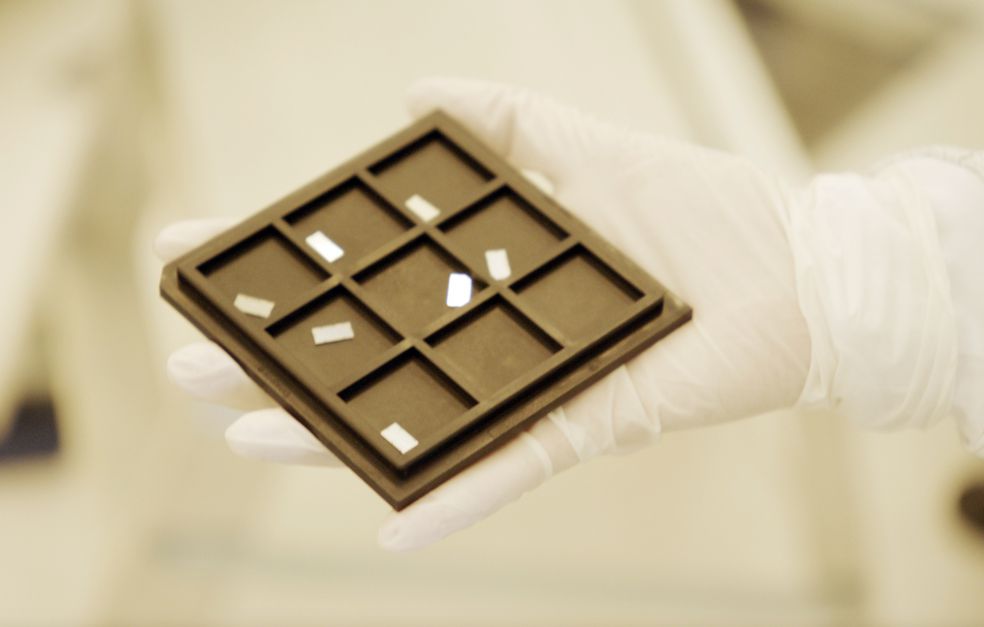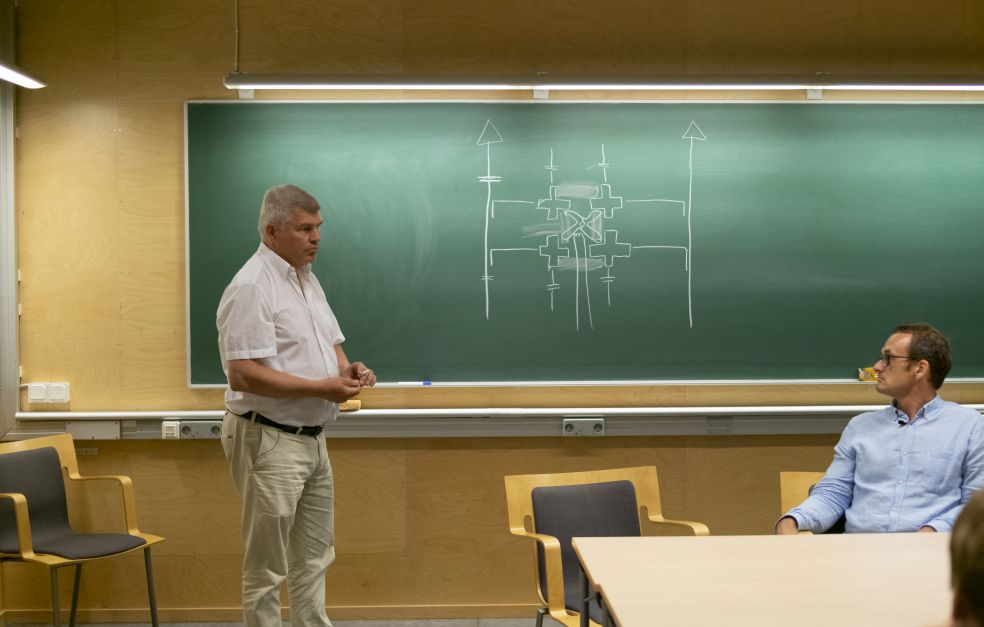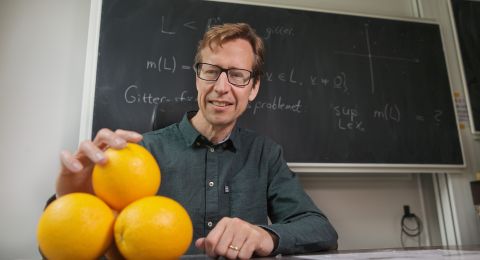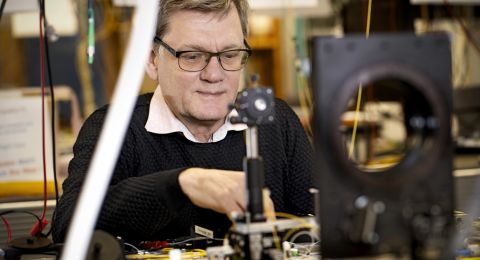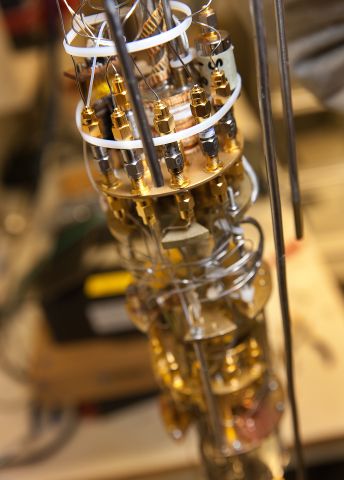
Strategic Initiatives
WACQT
Wallenberg Centre for Quantum Technology (WACQT) is a center responsible for research programs in four areas of quantum technology.
Chalmers University of Technology is responsible for quantum computing and quantum simulation.
KTH (The Royal Institute of Technology) is responsible for quantum communication, and Lund University for development of quantum sensing.
The overall program is being coordinated by Chalmers.
Website:
WACQT
Grant:
1.4 billion for 2018-2029.
Quantum physics has already had a huge impact, thanks to inventions such as the transistor and the laser, which in turn paved the way for modern-day information technology in the form of computers, the internet and advancing measuring methods.
We now possess knowledge enabling us to make further advances, usually referred to as the second quantum revolution. Among other things, scientists have aimed their sights at ultrafast quantum computers, surveillance-proof communication, hyper-sensitive measuring instruments and tailored drugs. Quantum computers are also expected to have a major impact on artificial intelligence and machine learning.
It is essential for Sweden to keep up with these developments, both as a base for research and as an industrial nation, an insight underlying Knut and Alice Wallenberg Foundation’s decision to allocate SEK 1 billion to the center.
A whole new computing dimension
But at present few people are really sure of the implications of using quantum computers, although there is no shortage of speculation. It is also difficult to predict when the first quantum computer that is more powerful than today’s computers will be built. What is certain is that many people are vying to be first, and that they are seeking solutions in different ways.
One person who is convinced of the enormous potential of quantum computing is Per Delsing, Professor of Quantum Device Physics, and Program Director of WACQT.
“It’s not going to be twice or three times as good – we’re talking about a whole new dimension. If we can build a 300-qubit quantum computer, it would theoretically be able to process more numbers than there are atoms in the universe.”
It is a mindboggling thought, but we are still some way away. In fact, the largest quantum computer built to date has a capacity of 20 qubits. WACQT’s aim is to build a 100-qubit quantum computer within ten years. But 50–60 qubits would suffice to exceed the computing power of present-day supercomputers.
The center opened in early 2018. The research program, coordinated by Chalmers University of Technology, also involves KTH (The Royal Institute of Technology) and Lund University.
“The center spans all four pillars of quantum technology: Chalmers is responsible for quantum computing and quantum simulation, and it is here that the quantum computer will be built. KTH is responsible for quantum communication, and Lund University for quantum sensing,” Delsing explains.
Researchers from other universities are also taking part in the program.
Manufacturing their own quantum bits
Absolutely essential to the project is the 1,000-square-meter clean room at Chalmers, described by a number of researchers as one of the best in the world. Here, the team are making their own quantum bits. They are using a machine that works as an evaporator, in which quantum bits with nanoscale features are made. They consist of a layer of aluminum oxide sandwiched between two layers of aluminum. Quantum bits and microwave circuits are patterned on a silicon chip using electron beam lithography. The microwaves are what spur the qubits into action.
“One might say that this is where the very heart of the superconducting quantum computer is created,” says Andreas Bengtsson.
Quantum bits are neither easy to make nor to store, and have an astonishingly short lifespan.
“They’re like potatoes – they have to be kept cool and in the dark,” Delsing says, with a chuckle.
The difference is that quantum bits have to be kept as close to absolute zero as possible. They are placed in a cryostat maintaining a temperature of minus 273.14 degrees Celsius.
Delsing and his colleagues have ample experience of building quantum bits.
In 2003 they created their first superconducting quantum bit, and were among the first in the world to do so. The qubits produced by their team are also among those with the longest lifespan. So far, the longest lifespan for a qubit is very short indeed – 100 microseconds, although 1,000 to 10,000 operations can be performed in that short time.
To ensure that the quantum bit lives as long as possible, it must be isolated, but a channel must also be opened so it can be controlled and regulated. Notwithstanding these two conflicting tasks, the greatest challenge is in fact to interconnect multiple qubits on a chip, and get them to communicate with each other.
“It’s really hard to control the energy and frequency of the qubits. We’re solving the problems step by step – we’re starting with two or three bits, before trying seven, and so on,” Delsing explains.
The fact is that no one yet knows when it will be possible to connect up 100 qubits.
Quantum sensing and communication
Initially, the most important task was to recruit a qualified research team possessing expertise in all the necessary fields. The program consists of a theoretical and an experimental part.
Work at KTH is focusing on quantum communication and quantum cryptography.
“We are attempting to make quantum communication secret. Physical quantum systems can neither be monitored nor copied without it being detected. If someone tries to gain access to the information, it is changed. Quantum encryption will be exclusive and costly to start with, and will mainly be used by sectors such as banking and finance, health care, insurance and defense,” says Gunnar Björk, Professor of Photonics, and project coordinator at KTH.
At Lund University the quantum sensing part of the project is being coordinated by Stefan Kröll, Professor of Atomic Physics. Quantum sensing enables scientists to take measurements with higher sensitivity and greater precision.
“One result will be more powerful measuring instruments – everything from instruments measuring local variations in gravity to locate mineral deposits or to give advance warning of earthquakes or volcanic eruptions, to better magnetometers used to study brain activity.”
Just over six months after WACQT was founded, the EU launched a flagship initiative with a budget of one billion euros. One of the sub-projects is called OpenSuperQ. It involves ten European partners from the academic world and industry working together to build a 100-qubit quantum computer in just three years, ultimately making it available in the cloud. Several WACQT researchers are also taking part in OpenSuperQ; the Swedish involvement is headed by Associate Professor Jonas Bylander at Chalmers University of Technology.
Text: Carina Dahlberg
Translation: Maxwell Arding
Photo: Magnus Bergström
More about WACQT
WACQT aims to establish and stimulate an interactive and open research environment. To this end, there are four interactive initiatives:
- A graduate school, where all PhD students and industry-sponsored doctoral students are offered joint courses and other activities. WACQT is expected to employ 60 PhD students over a ten-year period.
- A post-doc program offering a total of 40 post-doctoral positions over ten years.
- A guest researcher program.
- An industrial collaboration program.
Applications
Logistics is another major application for quantum computing. For instance, the number of combinations for 100 destinations with 100 aircraft and 100 crews is 1 followed by 316 zeros, whereas, by way of comparison, the number of particles in the universe is no more than 1 followed by 90 zeros.

